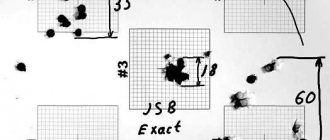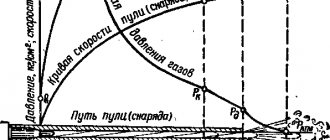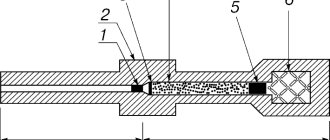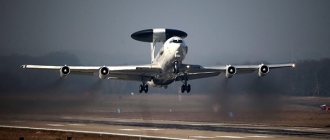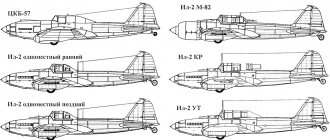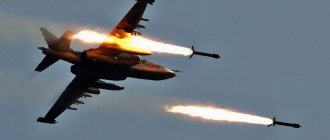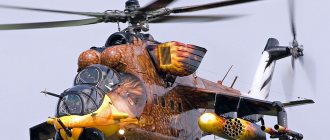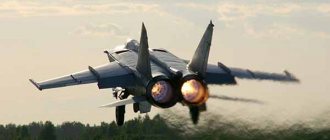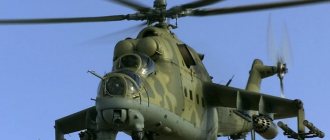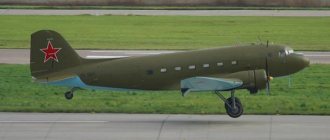The influence of various factors on bullet range and dispersion.
The combat effectiveness of small arms is influenced by many factors that lead to deterioration in accuracy, accuracy, high dispersion and increased ammunition consumption when performing fire missions. All factors influencing the quality of shooting can be summarized into several groups:
— design features of ammunition and systems;
— violations of barrel manufacturing technology;
— errors in ammunition manufacturing technology;
— violation of the rules for using weapons;
— natural wear of the barrel bore;
— state of the atmosphere and meteorological components.
For example, poor-quality cementation of the internal surfaces of the bores leads, under the influence of highly heated powder gases, to rapid nitriding of the surface layer of the metal, the formation of a brittle crust and ultimately the formation of a cracked bore and chipping of the metal. The caliber of the barrel increases, the obturation of powder gases is disrupted, the pressure in the barrel bore decreases, the range of the bullet decreases, and dispersion increases.
Poor manufacturing of the chamber and transition cones leads to swelling of the cartridge case, jamming of the bolt and breakage of the barrel barrels. The same thing happens with intensive use of small arms in dusty conditions, with irregular cleaning and lubrication of weapons.
Violation of the technology of pouring the lead jacket into bullets can lead to the formation of microvoids in the lead layer. It will be placed in a shell with an uneven density and, as a result, a shift in the center of gravity of the bullet from the calculated one occurs. This leads to an imbalance when the bullet moves along the bore and deflection of the bullet along the trajectory, which leads to large dispersion.
The flight of a bullet is influenced by atmospheric pressure, air humidity, wind direction, and air temperature.
Atmospheric pressure decreases by an average of 9 mm Hg for every 100 m increase in terrain. Art. Therefore, when shooting in the mountains, the density and force of air resistance decrease, and the bullet’s flight range increases.
Changes in air humidity have a negligible effect on air density and, therefore, on the range of a bullet, so it is not taken into account when shooting.
With a tailwind, the bullet flies further than with no wind, and with a headwind, it flies closer.
A side wind from the right deflects the bullet to the left, and a wind from the left deflects the bullet to the right.
As the temperature rises, the air density decreases, and as a result, the force of air resistance decreases and the range of the bullet increases. On the contrary, as the temperature decreases, the density and force of air resistance increase, and the bullet's flight range decreases.
When firing from the same weapon, due to the reasons discussed above, each bullet describes its own trajectory and has its own point of impact, which does not coincide with the others. Bullets are scattered. This phenomenon is called bullet dispersion.
The set of bullet trajectories obtained as a result of their dispersion is called a sheaf of trajectories, and the trajectory passing in the middle of the sheaf of trajectories is called the average trajectory.
The point where the average trajectory intersects the target surface is called the midpoint of impact or center of dispersion.
Bullet trajectory. Types of trajectories and their practical application.
Barrel vibrations, weapon recoil and other reasons lead to the formation of an angle between the direction of the axis of the barrel bore before the shot and its direction at the moment the bullet leaves. This angle is called the departure angle.
In order to reduce the harmful effect of recoil on shooting results, some types of small arms use special devices - muzzle brakes and compensators.
Having flown out of the barrel, the bullet moves by inertia (an anti-tank grenade for the RPG-7 grenade launcher moves by inertia after the end of gases from the jet engine, i.e. after the cessation of the reaction force).
At the moment of firing, the barrel of the weapon occupies a certain position. The straight line representing the continuation of the axis of the bore at the moment the bullet (grenade) is fired is called the throwing line.
When moving in the air, a bullet (grenade) is exposed to gravity and air resistance. The force of gravity is directed downward and causes the bullet (grenade) to gradually lower, and the force of air resistance is directed towards the movement of the bullet (grenade) and continuously slows down its movement, and also tends to tip its head back. Under the influence of these two forces, the bullet (grenade) flies in the air not along the throwing line, but along an unevenly curved curved line located below the throwing line. The curved line that the center of gravity of a bullet (grenade) describes when flying in the air is called a trajectory.
The stability of the grenade in flight is ensured by the presence of a stabilizer, which allows the center of air resistance to be moved back, beyond the center of gravity of the grenade. As a result, the force of air resistance turns the axis of the grenade to a tangent to the trajectory, forcing the grenade to move forward with its head. A shot in which the trajectory does not rise above the aiming line above the target throughout its entire length is called a direct shot.
Rounded ranges of direct shots at various targets when firing from some types of small arms are given in the table.
| Height of targets, their name and target numbers | Direct shot range when firing from a weapon chambered for cartridges, m | |||
| 14.5 mm | rifle | 5.45 mm | arr. 1943 | |
| Targets 0.5-0.55 m high: chest figure; anti-tank grenade launcher; machine gun (targets No. 6, 9a, 10) Targets with a height of 0.75-0.8 m: machine gun crew; An armored personnel carrier in a trench; a recoilless rifle (ATGM) on a vehicle in a trench; artillery gun in a trench (targets No. 10a, 176, 19a) Targets 1-1.1 m high: waist figure; hand-held anti-tank grenade launcher; anti-tank gun (targets No. 7, 9, 11) Targets 1.5 m high: running figure; recoilless rifle (ATGM) on a vehicle (targets No. 8, 17, 17a) Targets with a height of 1.9-2.5 m: armored personnel carrier; infantry by vehicle (targets No. 13a, 22) | 600 700 800 900 1000 | 400 500 550 650 750 | 400 500 550 600 700 | 350 400 450 500 650 |
The reality of shooting. When firing from small arms and grenade launchers, depending on the nature of the target, the distance to it, the method of firing, the type of ammunition and other factors, different results can be achieved. To select the most effective method of performing fire missions under given conditions, it is necessary to evaluate the fire, i.e. determine its reality.
validity is the degree to which the firing results correspond to the assigned fire mission. It can be determined in advance by calculation or based on the results of shooting. The validity of the shooting depends on the position from which the shooting is carried out (on the method of firing), the firing range, the nature of the target, observation conditions, the degree of training of the shooters and other factors. As the range to the target increases, the reality of shooting decreases. The larger the target and the better the observation conditions, the more effective the shooting. The validity of the shooting, in addition, is determined by the degree of lethal and penetrating effect of the bullet (grenade).
Direct shot range is one of the important characteristics of a weapon. The longer the direct shot range, the more accurate and efficient the shooting, and the lower the ammunition consumption.
When firing from the same weapon, due to a number of random reasons, each bullet (grenade) describes its own trajectory and has its own point of impact (meeting point), which does not coincide with the others. Bullets (grenades) are scattered.
The phenomenon of scattering of bullets (grenades) when firing from the same weapon under almost the same conditions is called natural scattering of bullets (grenades).
The set of trajectories of bullets (grenades) obtained as a result of their natural dispersion is called a sheaf of trajectories, and the trajectory passing in the middle of the sheaf of trajectories is called the average trajectory.
Assignment for independent work
1. Study the lesson material using the recommended literature:
[6] p. 3 – 174 1) study
2. Study the processes occurring in the barrel bore during a shot. Be prepared to answer the question:
— how does the speed of a bullet depend on the pressure of the powder gases and the density of the charge.
3. Study the factors influencing the external ballistics of a bullet. Be prepared to answer questions:
— how does wind affect shooting accuracy;
- what is called the direct shot range.
What is a departure point?
— the position of the center of the gun’s muzzle at the moment the projectile leaves.
Interesting materials:
How to speed up the growth of indoor plants? How to speed up plant growth? How does saltpeter affect plants? How do potassium fertilizers affect plants? How do organic fertilizers affect plants? How to choose a lamp for illuminating plants? How to choose a lamp for plants? How to protect plants from spring frosts? How to protect plants from frost? What root system is typical for dicotyledonous plants?
Test run
Many countries and their militaries have conducted test firings using large ammunition to determine the drag characteristics of each individual projectile since the mid-18th century.
These individual test experiments were recorded in extensive ballistic tables. Serious tests were carried out in England (the tester was Francis Bashforth, the experiment itself was carried out on the Woolwich Marshes in 1864). The projectile reached a speed of up to 2800 m/s. Friedrich Krupp continued testing in 1930 (Germany).
The shells themselves were solid, slightly convex, with a cone-shaped tip. They ranged in size from 75 mm (0.3 in) with a weight of 3 kg (6.6 lb) to 254 mm (10 in) with a weight of 187 kg (412.3 lb).
Mayevsky method
We have already mentioned this name a little above, but let’s look at what kind of method this man came up with. In 1872, Majewski published the report Trité Balistique Extérieure. Using his ballistic tables along with Bashforth's tables from the 1870 report, Majewski created an analytical mathematical formula that calculated the air resistance for a projectile in terms of log A and the value of n. Although the scientist used a different approach in mathematics than Bashforth, the resulting calculations of air resistance were the same. Mayevsky proposed the concept of a limited zone. While exploring, he discovered the sixth zone.
Around 1886, the general published the results of a discussion of the experiments of M. Krupp (1880). Although the projectiles used varied widely in caliber, they had essentially the same proportions as a standard projectile, measuring 3 meters in length and 2 meters in radius.
Ballistic coefficient of air bullets
Air bullets were not designed to hit a target, but to stop a target or cause minor physical harm. In this regard, most airgun bullets are made from lead, since this material is very soft, lightweight and gives the projectile a low initial velocity. The most common types of bullets (calibers) are 4.5 mm and 5.5. Of course, larger caliber ones were also created - 12.7 mm. When firing from such a pneumatic gun and such a bullet, you need to think about the safety of strangers. For example, ball-shaped bullets are made for entertaining games. In most cases, this type of projectile is coated with copper or zinc to avoid corrosion.
Methods and standard projectile
Many military personnel before the 1860s used the calculus method to correctly determine the trajectory of a projectile. This method, which was suitable for calculating only one trajectory, was performed manually. To make calculations much easier and faster, research began on creating a theoretical resistance model. Research has led to a significant simplification of experimental processing. This was the "standard projectile" concept. Ballistic tables were compiled for a contrived projectile with a given weight and shape, specific dimensions and a specific caliber. This simplified the calculation of the ballistic coefficient of a standard projectile, which could move through the atmosphere according to a mathematical formula.
Ballistic coefficient table
The above-mentioned ballistic tables usually include the following functions: air density, time of flight of the projectile in the range, range, degree of deviation of the projectile from a given trajectory, weight and diameter.
These indicators facilitate the calculation of ballistic formulas, which are needed in order to calculate the initial velocity of the projectile in the range and flight path. The 1870 Bashforth barrels fired a projectile at 2800 m/s. For calculations, Mayevsky used the tables of Bashfort and Krupp, which included up to 6 zones with limited access. The scientist conceived a seventh restricted zone and stretched the Bashfort trunks to 1,100 m/s (3,609 ft/s). Mayevsky converted the data from imperial units of measurement to metric units (currently SI units).
In 1884, James Ingalls presented his barrels in the US Army Ordnance Circular using Majewski's tables. Ingalls expanded the ballistic barrels to 5000 m/s, which were within the eighth restricted zone, but still with the same n value (1.55) as Mayevsky's 7th restricted zone. The fully improved ballistic tables were published in 1909. In 1971, Sierra Bullet calculated its ballistic tables for 9 limited zones, but only within 4,400 feet per second (1,341 m/s). This zone has lethal force. Imagine a projectile weighing 2 kg flying at a speed of 1341 m/s.
Siacci method
In 1880, Colonel Francesco Siacci published his work Balistica.
Siacci theorized that air resistance and density become greater as the projectile's speed increases. The Siacci method was intended for flat-fire trajectories with deflection angles less than 20 degrees. He discovered that such a small angle did not allow the air density to have a constant value. Using the tables of Bashforth and Mayevsky, Siacci created a 4-zone model. Francesco used a standard projectile created by General Mayevsky.

